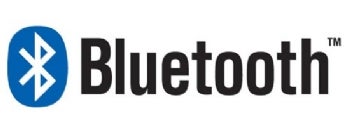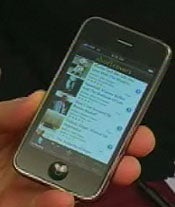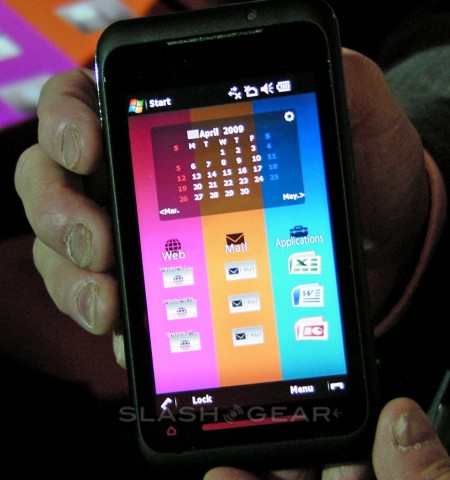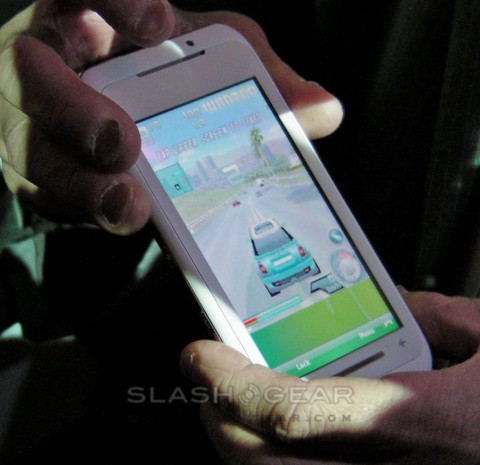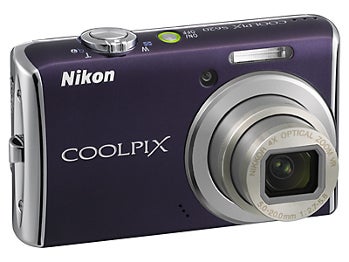Why You’re Not Happy
Six common barriers to personal happiness and fulfillment
By Annie Stuart
WebMD Feature
Happiness can be a paradox: The more you reach for it, the more it seems to slip through your fingers. “Ask yourself if you’re happy, and you cease to be so,” says Darrin McMahon, PhD, author of Happiness: A History.
How could this be true? Could it be you’re looking for happiness in all the wrong places? Do you think happiness is what you get when you get what you want? Some say happiness is a little like falling in love, that you can’t make it happen. If that’s the case, then how can you become happier?
Happiness Barrier No. 1: Complexity
Solution: Simplify
Schooled in Buddhist monasteries since childhood, Thupten Jinpa, PhD, knows a thing or two about the benefits of simplicity. Why do you think monks and nuns shave their heads, he asks? For one, it simplifies their lives.
A principal English translator to the Dalai Lama, Jinpa is no longer a monk. But he still holds on to some of the lifestyle's spartan values. “My family has a one-car policy,” he says, pointing out the hassles of owning more than one -- the costs, the maintenance, and the time managing the details. Multiple credit cards? They don’t create freedom or happiness, he argues -- although, these days, he might get less of an argument about that.
Modern life has elevated individual choice to the highest level, he says, but these choices come at a big price. “We often conflate quality of life with standard of life,” Jinpa says, “but after a point, the connection [between the two] disappears.”
If you simplify your life, you create more space in your day, making it possible to reflect on your life.
Happiness Barrier No. 2: A Breakneck Pace
Solution: Take a Pause
The same culture that entangles you in a web of complexity may also have you on the constant chase, Jinpa says. “That kind of tension takes a toll on your soul and your psyche.” Whether you call it meditation, silence, or prayer, taking a “pause” just a few minutes a day can help you “recharge your batteries” and make you feel happier. A good time to do this is in the morning. Without it, your life may feel out of control.
Venerable Robina Courtin, a Buddhist nun and organizer of the Happiness & Its Causes Conference, recommends spending these minutes practicing mindful meditation. “During the day, we’re completely absorbed by our senses,” she says, “so we don’t pay attention to our minds.” Sit in a quiet place and simply anchor your mind on your breathing. When your mind wanders, bring it back to your breath. Through this process, you learn to observe what your mind is saying.
Happiness Barrier No. 3: Negativity
Solution: Let go
“Your prison is nothing in comparison with the inner prison of ordinary people: the prison of attachment, the prison of anger, the prison of depression, the prison of pride.” wrote Lama Zopa Rinpoche to a California prisoner, a student of the Liberation Prison Project, which offers Buddhist teachings to people in prison.
Some might view this statement as a bit of an exaggeration. But negative, compulsive thoughts do have a quality of stickiness to them, Jinpa says. How you see things and the way you experience the world are strongly linked, making it critical to adopt a positive outlook. “You interact with the world through your senses and mind,” he says. “If you can find a way to stand at the doorway of your senses, you can have a say in how you experience the world.”
In our culture, though, we take it as natural that people are angry, depressed, or dejected, Courtin says. “No wonder we get depressed -- it’s a depressing world view. It says you can’t do anything about it.” If you believe your abusive boss, father, or partner is the main cause of your suffering, for example, then you’ve tied your own hands and risk becoming imprisoned by toxic thoughts.
The Buddhist view, by contrast, is that happiness is what you get when you give up a neurotic state of mind, Courtin says. It’s empowering, she says, because knowing you can change it gives you the courage to look inside, pay attention, and take responsibility for your thoughts. Rather than judging negative thoughts, Courtin advises observing them with compassion. Then ask yourself, “What can I do about this?”
Techniques like mindful meditation can help with this, but may not be for everyone, especially those experiencing severe depression, says Philippe R. Goldin, PhD, research associate in the department of psychology at Stanford University.
But there are other simple steps you can take to counteract negativity and enhance your happiness. Practicing gratitude is one. People appear to have a certain set point for happiness, a range that’s influenced by genetics. But those who regularly practice gratitude can enhance this set point by as much as 25%, reports Robert Emmons, PhD in his book, Thanks!: How Practicing Gratitude Can Make You Happier. Through his research, Emmons found that people who kept gratitude journals felt better about their lives, exercised more, and were more optimistic.
Happiness Barrier No. 4: Despair
Solution: Stay hopeful
Did a parent attempt to protect you as a child by saying, “Don’t get your hopes up”? There’s no evidence that hope is hurtful, says David B. Feldman, PhD, assistant professor of counseling psychology at Santa Clara University in California. Instead, hope can greatly enhance happiness in people.
But genuine hope isn’t a yellow smiley face or the denial of death at the bedside of a loved one in hospice, says Feldman, who’s pursued research and clinical work addressing the question: “How do people maintain hope and meaning in the face of adversity?
Three components are essential for hope to thrive, Feldman says. They are having goals, as well as a plan and the motivation to achieve them. “Those who succeed don’t internalize the blame game, either internally or externally,” he says, “They ask, ‘what now?’”
In addition to reaching goals, these people perform better in sports and school, Feldman says. They have a greater tolerance for pain. They use health-promoting behaviors. They also have a lower risk for depression, anxiety, and heart disease.
Feldman advises setting personally meaningful goals and checking to see where your hope falters -- is it with the plan or the motivation? Allow yourself to daydream, he says. It’s a wonderful source of hope and, therefore, happiness.
Happiness Barrier No. 5: Suppressing sadness
Solution: Feel the real
Having a positive outlook doesn’t mean you never allow yourself to feel sadness. The parents who try to protect their children from dashed hopes -- or any kind of sadness -- may actually produce the opposite effect than is intended, says James R. Doty, MD, director of the Center for Compassion and Altruism Research and Education at Stanford University. Some suffering, he says, makes you a whole person and allows you to acclimate and move forward in your life. Doty speaks from experience. He had an alcoholic father and invalid mother. He lived on public assistance for much of his youth.
“Happiness is not the absence of sadness,” says David Spiegel, MD, medical director of the Center for Integrative Medicine at Stanford University School of Medicine. It is not a stiff upper lip or the pop psychology mantra, intoning “always stay upbeat” in the face of cancer. “Phony happiness is not good.” By suppressing sadness, you suppress other, more positive emotions, as well, he says, so people who try to suppress emotions actually become more anxious and depressed.
By finding outlets for sadness and frustration, you gain some measure of control, Spiegel says. Using others as a sounding board -- not as a toxic dumping ground -- can help convert generalized anxiety and depression into targeted feelings you can address with specific solutions.
Happiness Barrier No. 6: Navel-gazing
Solution: Connect with others
How important are social networks to your happiness? Perhaps even more important than you realized. A recent 20-year study of more than 4,000 people showed that happiness is influenced not just by your immediate friends and family. The happiness of a friend of a friend of a friend -- someone you’ve never even met -- can also influence your happiness. It turns out that happiness can spread through social networks, like a virus.
Unfortunately, many people spend so much time by themselves navel gazing, they don’t benefit from this positive “contagion.”
The more self-absorbed you are, the more your world closes in, and the less realistic you become, all of which produces a vicious circle. “You become oblivious to the needs of others, and the world shrinks still more, making you less able to see outside yourself.” If asked, ‘Why are your problems so special?” says Jinpa, you might respond, “Because they’re mine!”
“If you have such a huge ego, you’re setting yourself up as a huge target, which can easily get hit,” Jinpa says. But using a “wide-angle lens” instead helps you see connections you wouldn’t otherwise see, such as the universality of suffering. All it may take is having a loved one diagnosed with a serious disease to realize how many people are grappling with similar challenges. Feeling joined by others on this journey provides some comfort and happiness.
The straightest path to making connections like these? Compassion and caring for others.
Even primates seem to understand this, says Robert M. Sapolsky, PhD, author of Why Zebras Don’t Get Ulcers and research associate with the Institute of Primate Research at the National Museum of Kenya. Primates that groom each other after a stressful event experience a reduction in blood pressure. The clincher? Grooming others has a greater impact than getting groomed, says Sapolsky.
Compassion engages us with others, removes isolation, builds resilience, and leads to deep fulfillment, says Doty. “Without compassion, happiness is simply short-lived pleasure.”
Tenzin Gyatso, the 14th Dalai Lama, may have said it best: “If you want others to be happy, practice compassion; if you want to be happy, practice compassion.”
